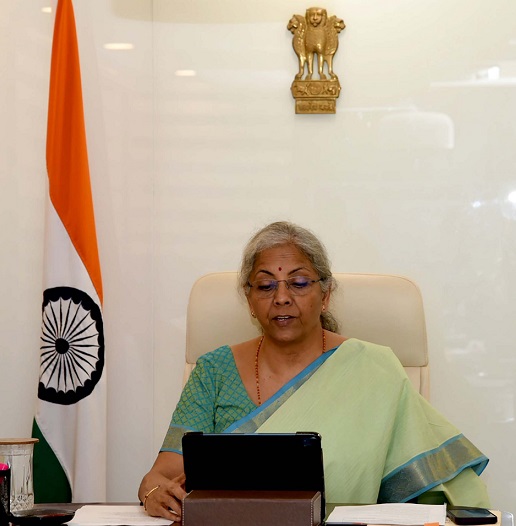
AMN
Finance Minister Nirmala Sitharaman said that the last decade has witnessed a substantial improvement in the sanctity and credibility of the Union Budget, leaving past constraints and archaic practices behind.
In a social media post today, the Finance Minister said, that our budgets are characterized by fiscal prudence, transparency, and inclusiveness, ensuring investments in social development and infrastructure. She said, now the entire budgetary exercise, including the legislative process, is completed well before the start of the financial year which has improved administrative efficiency.
Guided by PM Modi’s “vision of transparency, efficiency and effectiveness in governance, our government has reshaped the budget from a mere record of expenditures into a strategic blueprint for equitable development”, the finance minister wrote on X.
Here are some key highlights of how the finance minister described the past 10 years of the current regime in reshaping the Union Budget for the country:
- The last decade has witnessed a substantial improvement in the sanctity and credibility of the Union Budget, leaving past constraints and archaic practices behind. “Our government has reshaped the budget from a mere record of expenditures into a strategic blueprint for equitable development. We make judicious & efficient use of every rupee collected from our taxpayers and give them a transparent picture of public finances,” the Union Minister said.
- “We make judicious & efficient use of every rupee collected from our taxpayers and give them a transparent picture of public finances,” she added.
- Under the Narendra Modi government, the Union budgets are characterised by fiscal prudence, transparency and inclusiveness, ensuring investments in social development and infrastructure, the finance minister said.
- She also pointed out that countries with transparent budgets are often viewed more favourably by international bodies such as the International Monetary Fund (IMF) and the World Bank, which can lead to improved global trust.
- The shifting of the day of presentation of Budget in Parliament to February 1 since FY18, instead of the last working day of February, effectively advanced the expenditure cycle by two months, she said.
- “Prior to this reform, the authorisation from Parliament through ‘vote-on-account’ was available only for the first two months of financial year… Now, the entire budgetary exercise, including the legislative process, is completed well before the start of the financial year”, which has led to better administrative efficiency and delivery of schemes, the minister added.
- It has also empowered the state governments (which used to present their Budgets before the Centre), she wrote, adding that the states are able to “plan their own budgets better as they are now aware of details of the Centre’s fiscal plan” for the year ahead.
- The Union government administers 108 centrally sponsored schemes (CSS) through state and Union Territory administrations, with a budget of approximately Rs 5.01 lakh crore for the financial year 2024-25 and Rs 4.76 lakh crore for the previous year.
- “Previously, it was challenging to ascertain the timeliness and amount of funds released to the implementing agencies under a CSS and to determine whether the funds were from the Centre or the State. Under the SNA model, each State has to identify and designate a Single Nodal Agency (SNA) for every Centrally Sponsored Scheme (CSS),” the minister said.
- The government’s move to merge the Rail Budget with the General Budget to end a colonial practice that commenced in 1924 has brought the affairs of the Railways to the centrestage and enabled the presentation of a “holistic and transparent picture” of the Union government’s financial position.
- The finance minister also highlighted the increase in the Contingency Fund corpus to Rs 30,000 crore from Rs 500 crore in FY22. “The corpus of this Fund, however, remained a meagre Rs 500 crore from FY 2006 despite an exponential increase in the Budget over the years,” she wrote, adding that the problem of a low corpus was felt acutely during COVID-19 when Parliament couldn’t meet and conduct business.
- She also pointed out that the Modi government’s move to present the Budget digitally has reduced the number of printed copies and made the process of laying the Budget in Parliament seamless.
- The Modi government, the minister said, is committed to harnessing cutting-edge technology, enhancing transparency, and pursuing ongoing reforms to lay a strong foundation for a Viksit Bharat. “We will continue to maximise the value and impact of hard-earned taxpayer money, ensuring it is put to the best possible use for the benefit of all,” she wrote in her concluding remarks.
